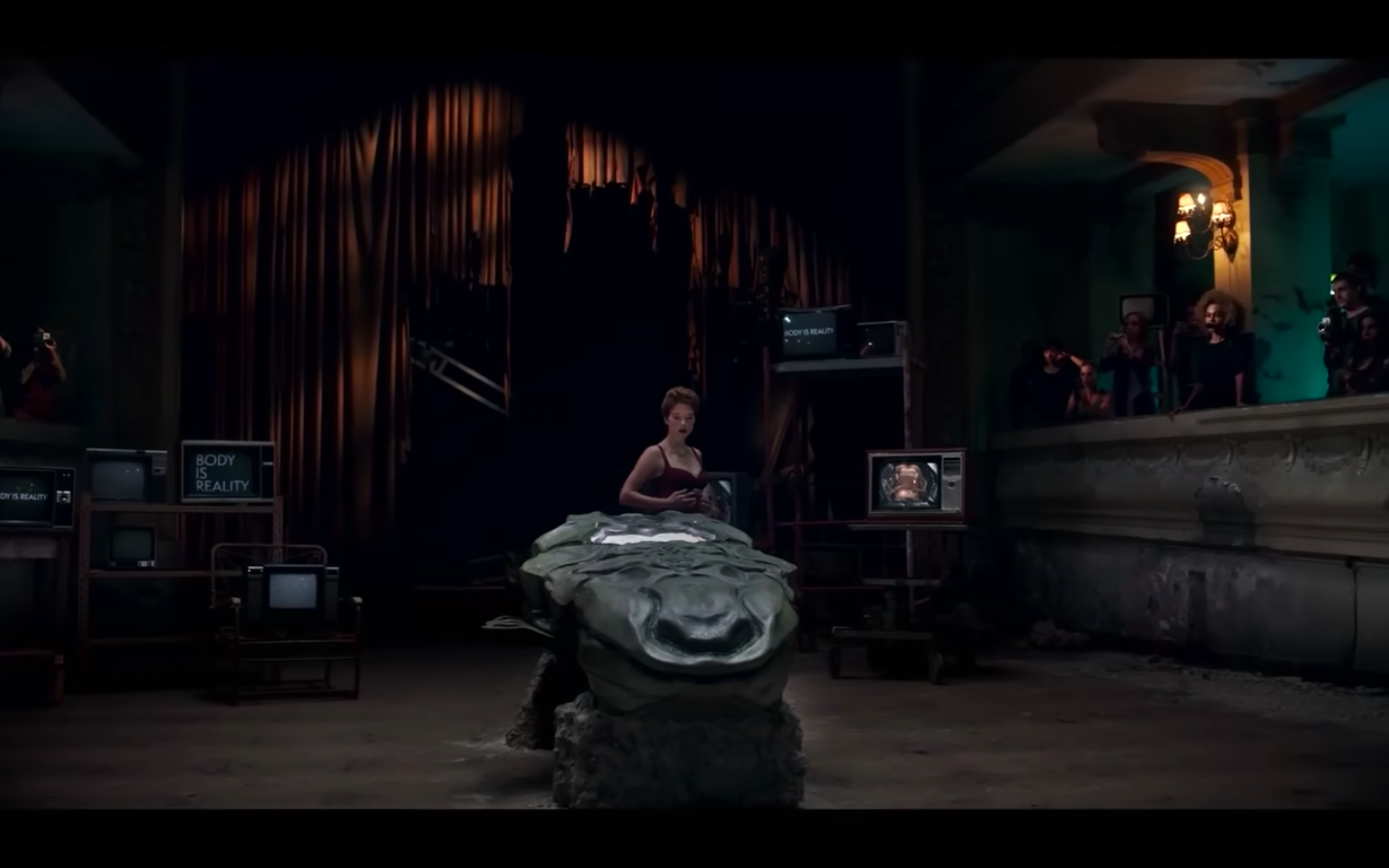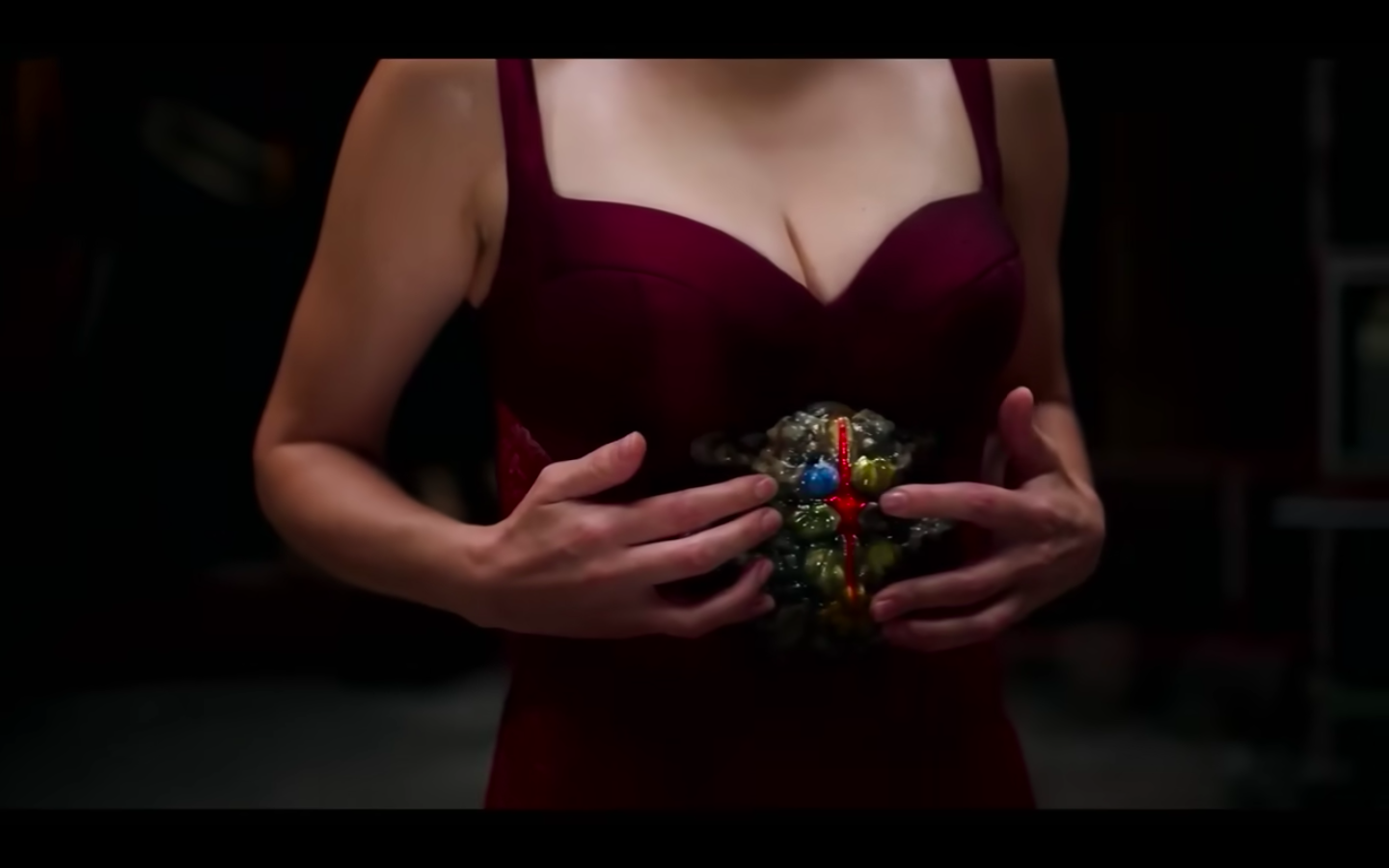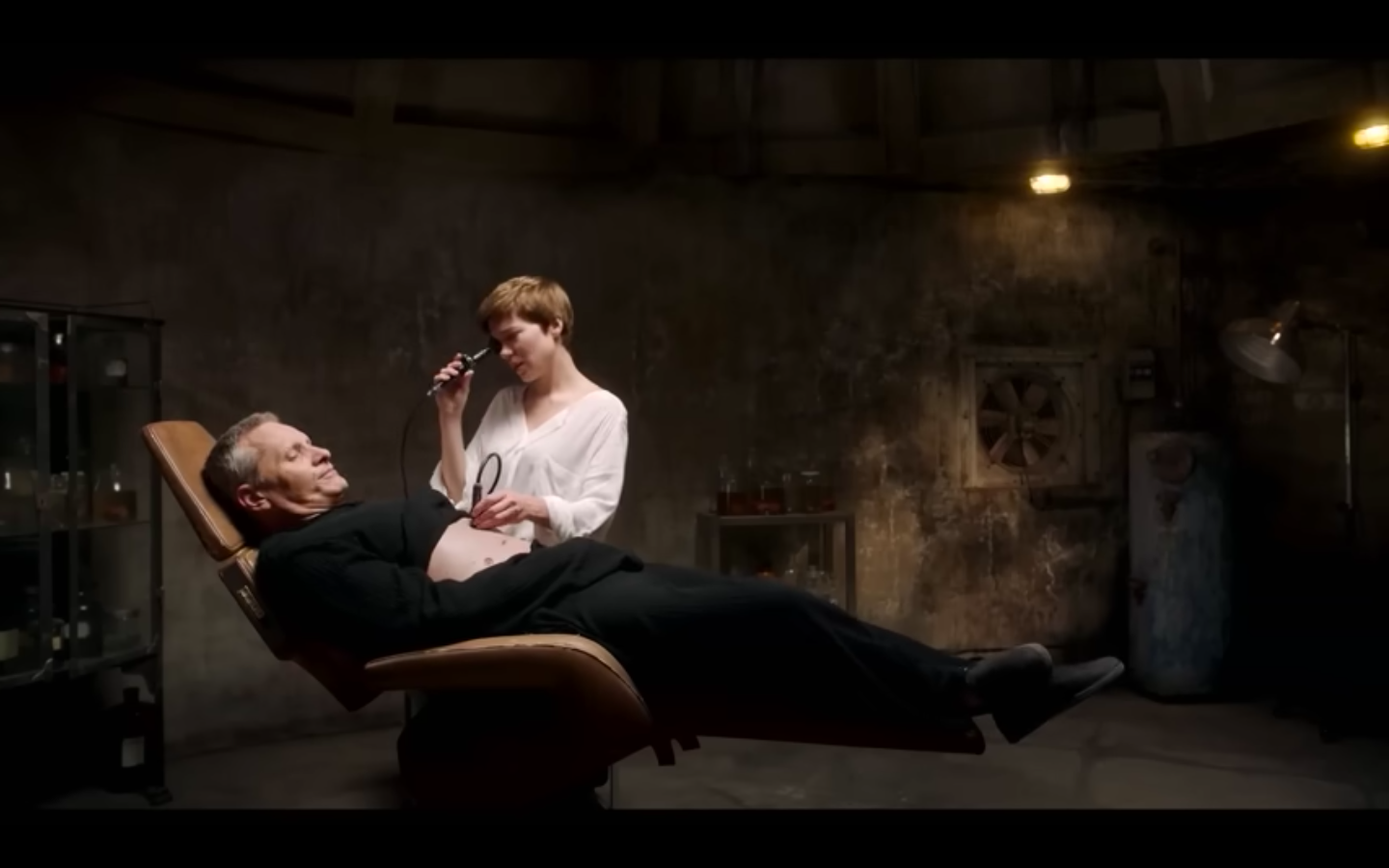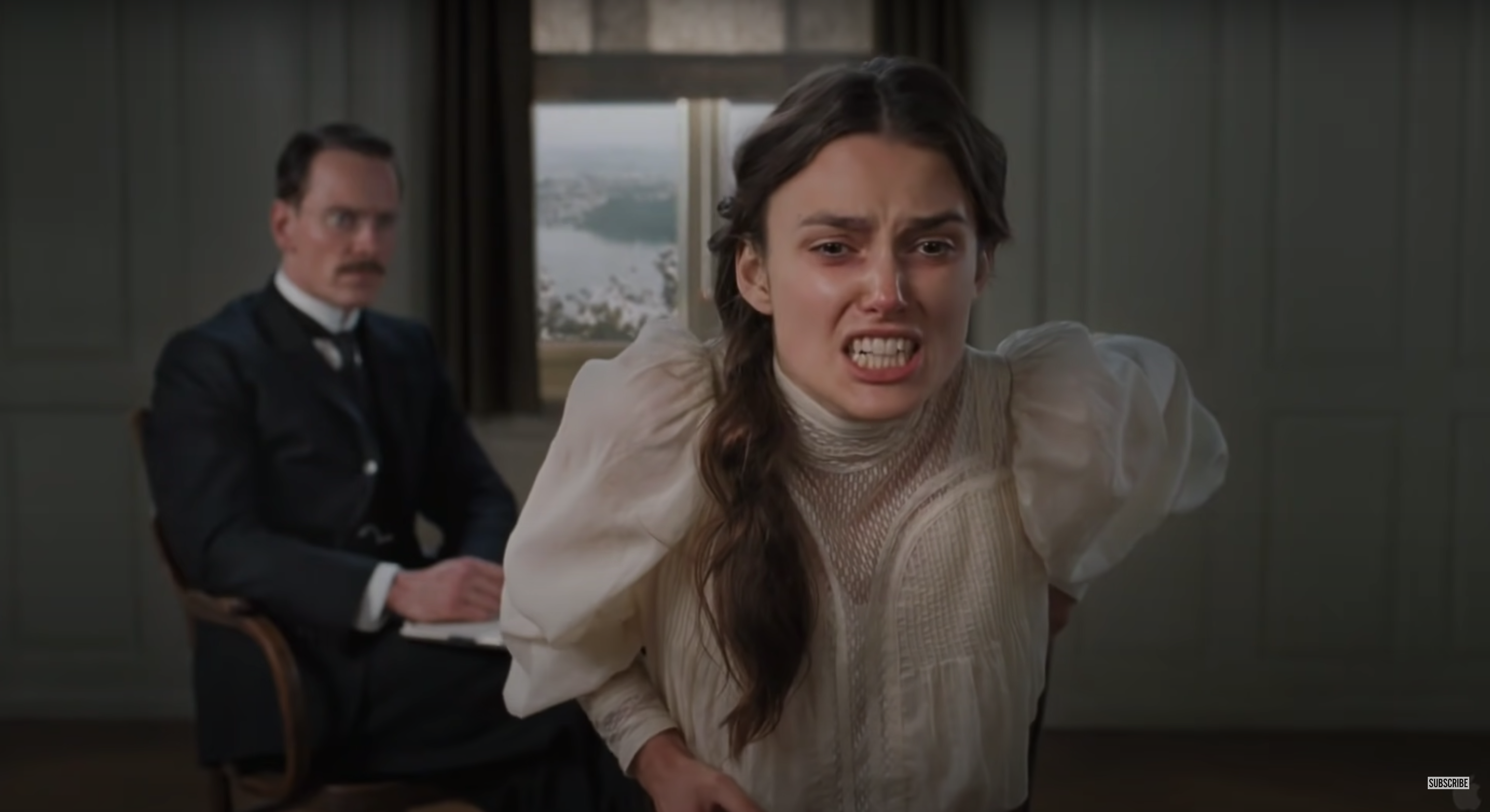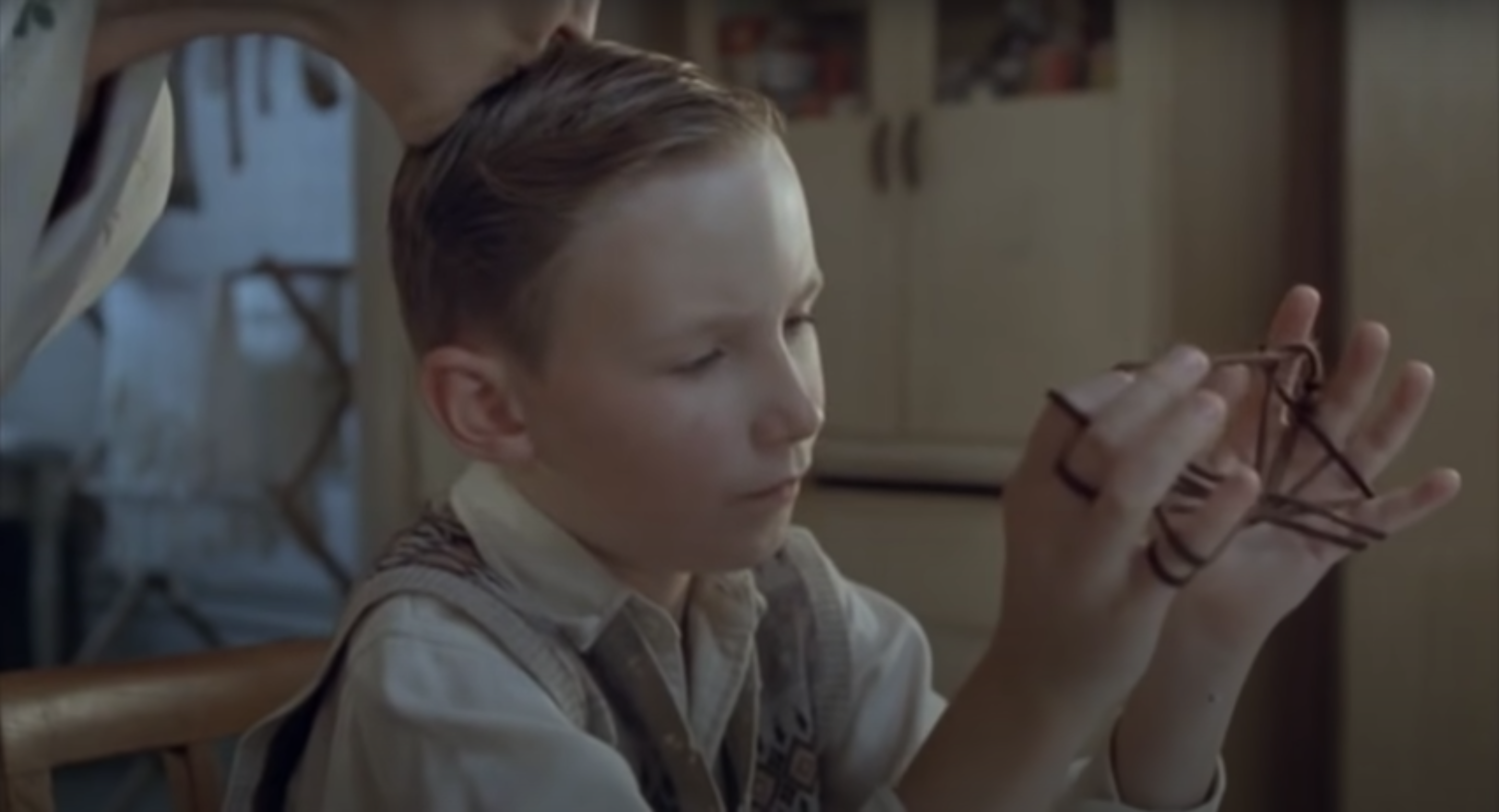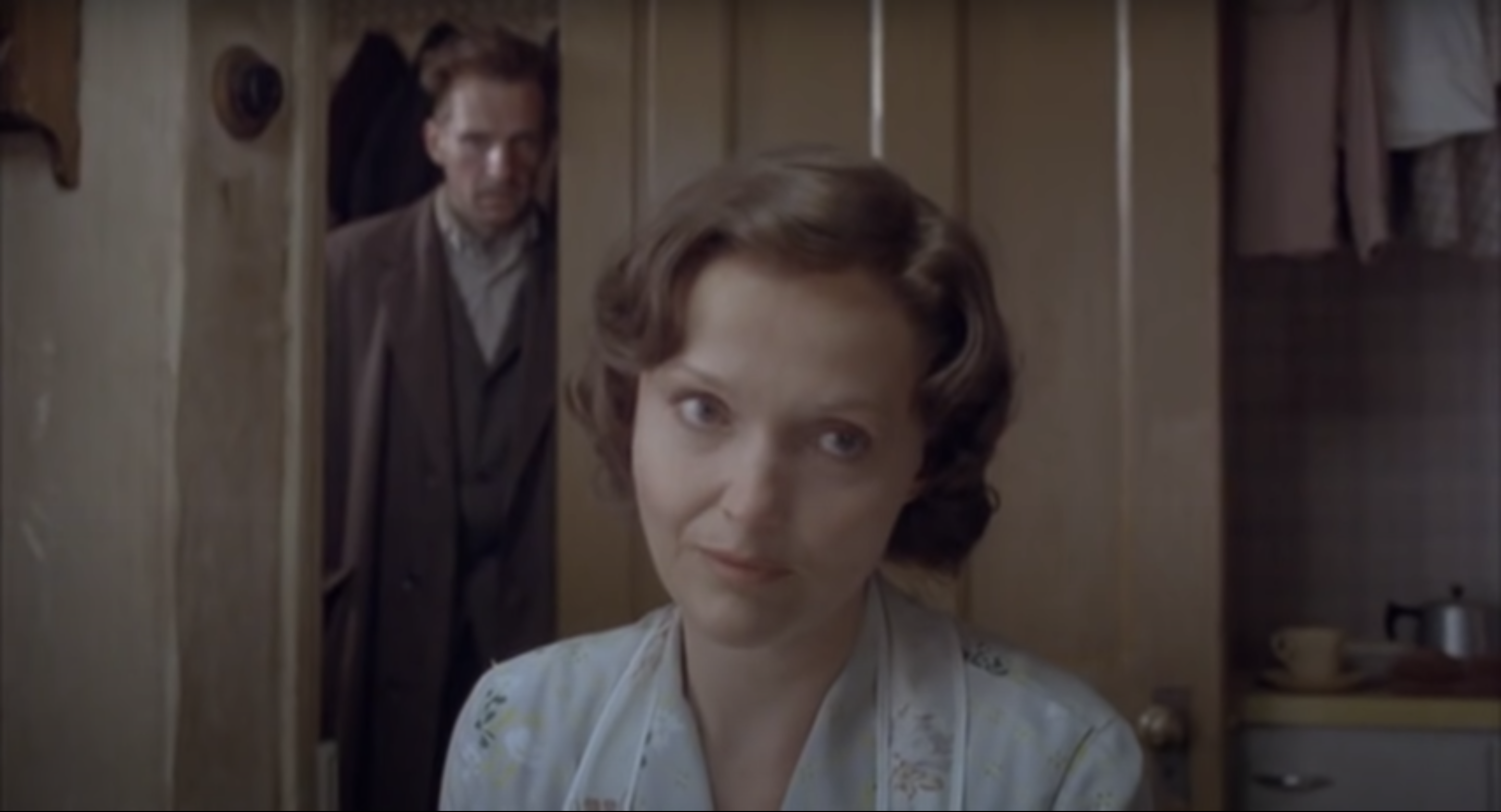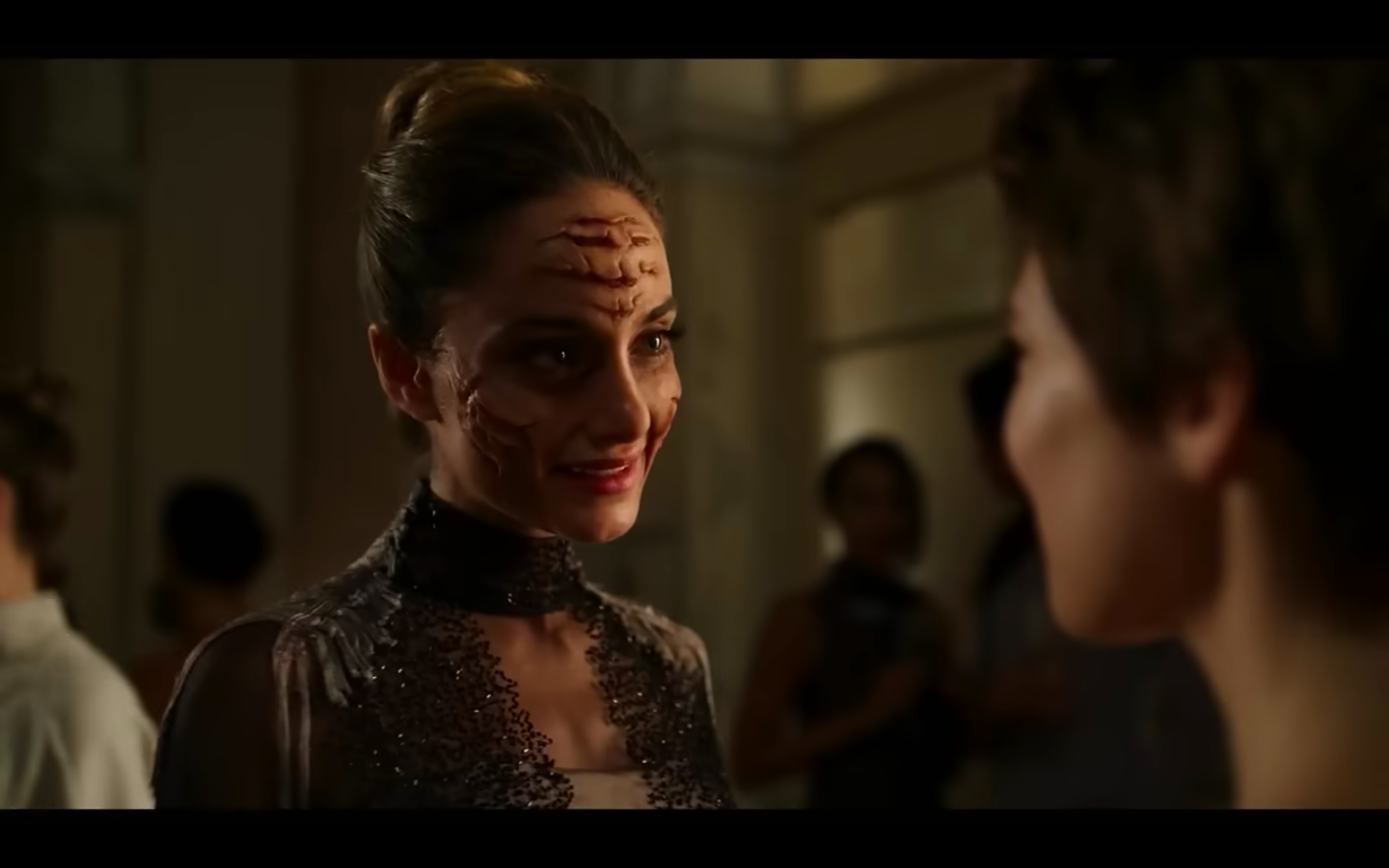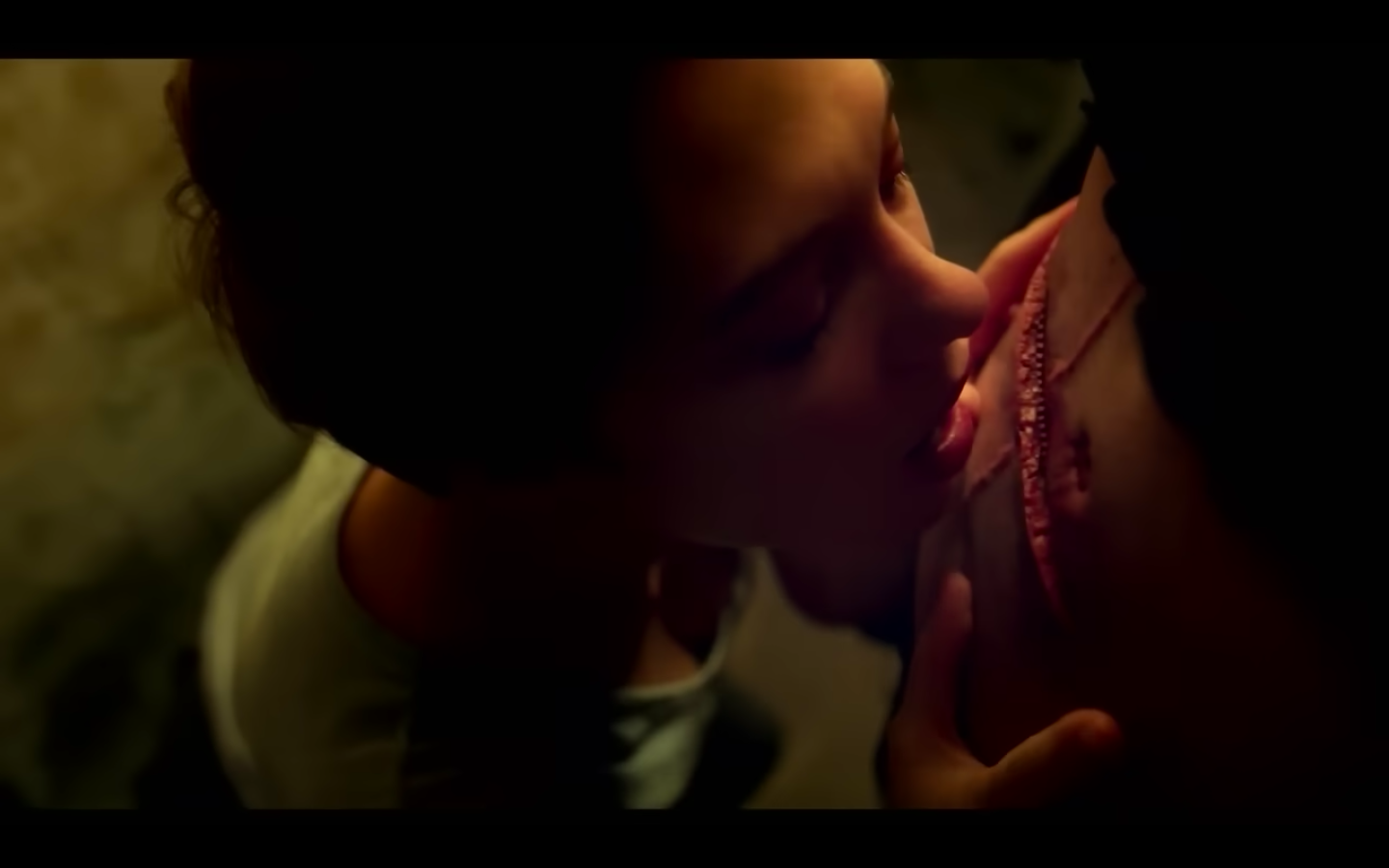Insurrectional Evolution: The Cronenbergian Revisited
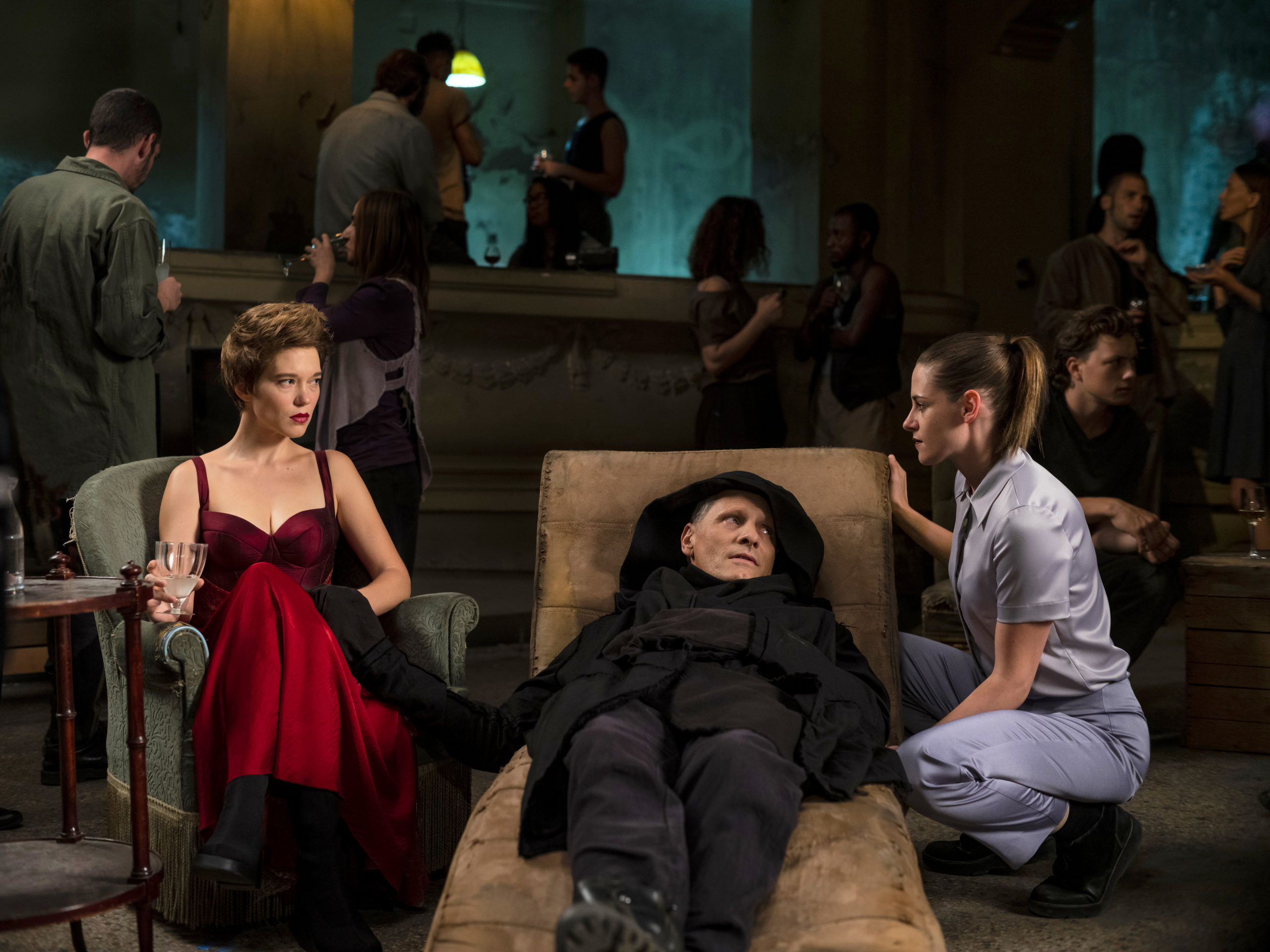
David Cronenberg, Crimes of the Future, 2022, Film Still [courtesy of NEON]
Share:
Early in Crimes of the Future (2022), the new film written and directed by David Cronenberg, performance art duo Saul Tenser (Viggo Mortensen) and Caprice (Léa Seydoux) visit the dingy offices of the National Organ Registry. They have come to consult a pair of factotums (Don McKellar as Wippet and Kristen Stewart as Timlin), regarding the registration and archival documentation of the novel organs being produced inside Saul’s body, which Caprice surgically extracts during their performances. Saul’s mutations are peculiar but not unprecedented; in the desolate, twilight society posited by the film, the human condition has, for unspecified reasons, begun to lose its normative functions. Pain and infections no longer exist. New organs and forms of corporeal organization proliferate in enigmatic and unforeseeable ways. Evolution, Wippet remarks to his guests, appears to have gone “insurrectional,” with the threat (or perhaps the promise) that humanity is approaching a threshold where people will no longer be, “strictly speaking, human. At least in the classical sense.”
Recognizing that the body has always contained potentials which overcome or undermine the humanist ideal of the rational, self-contained individual has been a sustained theme of the Cronenberg oeuvre from the start—as in his 1970 experimental featurette Crimes of the Future, which details the misadventures of a weird dermatologist who grapples with a plague, triggered by the effects of cosmetic products, that kills off a majority of the planet’s sexually mature women. The present Crimes of Future bears no direct narrative link to its predecessor, yet for half a century one can track a set of themes, preoccupations, and aesthetic strategies across the Cronenberg filmography so consistent that his work has earned a supremely adjectival status: one can speak of the “Cronenbergian” as one would the “Kafkaesque.” Moreover, the filmmaker and the author share an imaginative investment in physiological quandaries, existential conundrums, and a satirical view of bureaucracies and hypothetical institutions, as well as a genius for meticulously indeterminate tonal ambivalence. Crimes of the Future—Cronenberg’s first film since Maps to the Stars (2014) and the first derived from an original screenplay of his own since eXistenZ (1999)—is so emphatically Cronenbergian that one might view it as his magnum opus or, in a less forgiving light, a low-key reprise of his greatest hits.
David Cronenberg, Crimes of the Future, 2022, screenshot
What do we mean when we speak of the “Cronenbergian”? With the advent of this superb, unexpectedly tender film, which has been widely received as a return to the “old Cronenberg,” that question returns with fresh force. The task of this appraisal is to examine the operations of Crimes of the Future, as well as how they allow us to rethink the most audacious filmography of any working North American director.
Abstract yet densely material, Crimes of the Future is set in the latest of Cronenberg’s dissociated “interzones” (to borrow a term from William S. Burroughs, one of the director’s key influences): a seaside landscape of capsized ocean tankers, crepuscular alleyways, bunkers, grottoes, nondescript office buildings, and, most crucially, an underground venue where audiences gather to witness spectacles of the body-art avant-garde. Ensconced in an insectoid autopsy apparatus bristling with robotic surgical arms, Saul lies recumbent while Caprice manipulates a device suggesting the hybridization of an Xbox controller with a cane toad. Automated scalpels neatly open Saul’s torso to expose his freshly sprouted organs, which are then extracted, tattooed, and placed in jars of formaldehyde as the event’s attendees mill about, sipping cocktails.
Such performances (another features a dancer with his eyes and mouth stitched closed, his body covered with prosthetic ears) are the only form of culture proposed in the film’s dystopic scenario, but they link to a more extensive network of political enterprises. Saul, we learn, is working undercover for a New Vice Unit detective (Welket Bungué), whose division’s mandate is to investigate the more disturbing manifestations of insurrectional evolution. The details of their arrangement remain, like the funeral pallor of the cinematography, somewhat murky. Of key concern to New Vice is that bodily reorganization through elective surgeries might be passed on genetically. This phenomenon is, in fact, well underway, and actively promulgated in a subculture of “plastic eaters” led by the otherwise normie dad Lang Dotrice (Scott Speedman). Father of the first child to be born “naturally unnatural,” Lang espouses a radical post-human ideology that may well be, in the context of Future’s unspecified ecological collapse, an affirmative bio-ethical innovation: The only path for human survival is to take nourishment by feeding on our own industrial waste.
David Cronenberg, Crimes of the Future, 2022, Film Still [courtesy of NEON]
Further complicating matters are subplots involving the femmes fatales overseeing LifeFormWare, manufacturer of the film’s various biomorphic devices, who have a penchant, never quite explained, for assassinating people by drilling into their skulls. Meanwhile, an admirer refers Saul to a rogue cosmetic surgeon who installs a zippered orifice in his abdomen and invites him to enter an upcoming Inner Beauty Pageant under the category of Best Original Organ With No Known Function. Dire as its world-building may be, Crimes of the Future is not without a sense of humor.
Nor, clearly, does it lack ideas. A tale of ecological collapse, immune system derangements, and a culture in thrall to post-human spectacle, Crimes of the Future feels inherently of its era and, like many of Cronenberg’s speculative thrillers, eerily timeless and placeless—a nowhere film that is also now, here. It’s impossible not to read it through the lens of our moment: perpetually mutating pandemics, record-breaking global heat waves, the discovery of microplastics in the human bloodstream. If Crimes of Future allegorizes the crimes of our present, the movie offers no easy perspective on how to feel about them. Mischievous and murderous, spiked with renegades and prophets of the New Flesh, the narrative unfolds with a strange equanimity. Extreme as the characters’ auto-experimentations are, their fundamental problem is how to assign meaning to the body, and if the body does not disclose its meaning, then meaning will be imposed upon it. That Saul has chosen performance art to grapple with his unruly body, rather than, say, having sought medical care, is at once an unspoken indictment of his society’s failures and a trope that underscores how our relations to our bodies are as much aesthetic as they are clinical. When science fails us, as it so markedly has with the crises of Covid and climate change, our final recourse may well lie in a politics of culture committed to avant-garde mutual care and revolutionary autopoiesis.
Something deeply human abides in this parable of biological pandemonium. Crimes of the Future beguiles in its profound concern for care. Do we care what happens to our bodies? What modes of care must be invented to survive, overcome, adapt, and thrive in the toxic future of our present? The speculative apparatus of the film is structured by such questions; its emotional force is to leave these questions hanging in the haze of an unnamable affect where bewilderment, brutality, suffering, ecstasy, and an exquisite gentleness comingle. Sustaining this complexity of tone characterizes the Cronenbergian signature at work as much as the gestation of any mutant organ does. After all, the most outrageous of the film’s images are the most familiar ones. The surgical performances, improbable orifices, and biomorphic technologies recall a whole set of iconic motifs: the reproductive anomalies of The Brood (1979) and Dead Ringers (1988); the techno-corporeal mutations of Videodrome (1983) and The Fly (1986); the bioports, squishy hardware, and amphibian widgets of eXistenZ (1999). What proves most striking about Crimes of the Future are not spectacles of this kind but rather the film’s ethical disposition toward them.
David Cronenberg, Crimes of the Future, 2022, screenshot
David Cronenberg, Crimes of the Future, 2022, screenshot
A strict atheist and self-avowed existentialist, Cronenberg is markedly unsentimental in his visions of the flesh. And yet, this commitment to examining the brute materiality of existence suffuses his films with a remarkable, if necessarily disquieting, sympathy for the raw fact of being human. No other filmmaker proceeds so imaginatively from the essential question: What are we? Crash (1996), his dispassionate masterwork, excises any motivation, interiority, or psychology that would explain why a subculture forms around sexual arousal engendered by car crashes. And yet, perversely, by withholding any moral editorializing or thematic affordances, the film exudes an uncanny (but unplaceable) empathy for its benumbed protagonists. Is the film a cautionary tale? Satirical? Tragic? Comedic? Ridiculous? Earnest? I have watched the film with audiences who howl with laughter from beginning to end; a nervous reaction, I suspect, to the challenge posed by the film’s queasy indeterminacy. I have watched it alone many times over, rapt in fascination. And yet the movie is funny and grim and preposterous and deadly serious, all at once. But then, so too, life.
The script for Crimes of the Future was written more than 20 years ago, and Cronenberg maintains that he didn’t change a word. That places its inception at a fascinating turning point in his work, the exact moment when the playful conceptual science fiction of eXistenZ gave way to the no less conceptual, but very different territory of Spider (2002), a film that inaugurates a run of works which eschew the visionary violence and intellectualized grotesquerie central to his brand—or, rather, to how he was branded by his critics and admirers. The films that Cronenberg produced in the 21st century stake out other terrains: A History of Violence (2005) is a gangster movie set in small-town America; Eastern Promises (2007) chronicles the Russian mob’s activities in London; A Dangerous Method dramatizes the early years of psychoanalysis as it plays out between Freud, Jung, and Sabrina Spielman, a patient who becomes Jung’s lover and eventually a psychoanalyst in her own right; Cosmopolis (2012) tracks the musings and misadventures of a billionaire financier on the edge of ruin as his limousine winds through an overdetermined Manhattan traffic jam; Maps to the Stars (2014) is a corrosive depiction of Hollywood self-absorption.
In none of these films do you find overt “body horror” tropes but rather an extension of Cronenberg’s abiding concerns by other means. What, if anything, distinguishes the frenzies of Rabid (1977) from the maniacal outbursts in A Dangerous Method? How far, truly, are the projected realities of Videodrome or Naked Lunch from the ersatz Americana in A History of Violence? To say that Cronenberg no longer makes horror or science-fiction–inflected films is at once true and too obvious, predicated upon the reduction of his earlier films to a subset of motifs. Neither could one characterize these developments as a turn toward classicism. M. Butterfly (1993) and Dead Ringers are, however twisted, more or less straightforward dramas, and even at his most sui generis, Cronenberg’s direction is measured, focused, and succinct; for all the flamboyance of his ideas, he’s the least expressionist of filmmakers.
What unites these films with their predecessors is the most generalized—and forceful—of Cronenberg’s ideas. His central theme is the mechanics of signal processing: how information gets received, synthesized, or rejected, and then output into an external milieu. Scanners (1981), Videodrome, The Fly, and eXistenZ interrogate this flow in a literal, technological sense: The protagonists are convulsed and transformed (physically and psychically) by external impulses. Naked Lunch diagrams a matrix of narcotic stimulation reacting on, and with, the creative flow. Calamitous erotic and reproductive signals structure his initial avant-garde experiments and the venereal horror cycle of his early exploitation films. Variations on this theme underpin Dead Ringers and Crash.
What is unique about Cronenberg’s deployment of this idea is his almost total lack of interest in the origins of these impulses. Where they come from is irrelevant. What they consist of is unknowable. All that matters is how they enter and transform systems, their valences and effects, the things they inhibit or make possible. Experimental skin grafts foment the horny armpit parasites of Rabid but don’t explain them. The sadomasochistic televisual ordeal of Videodrome is a sustained enigma. Crash, with its totalized emphasis on exteriority (behavior) over interiority (psychology), takes this ontological refusal to its maximum. That Cronenberg should have made an apparently straightforward historical drama about the advent of psychoanalysis, the interpretive methodology par excellence, is less curious than it seems, given that the Freud/Jung relationship was tightly bound up in debates over how to decode symptoms. Every Cronenberg film could be titled A Dangerous Method.
David Cronenberg, A Dangerous Method, 2011, screenshot
This theme—how an organism processes signals—explains why so many of his movies concern experiments that people conduct on themselves. Something is happening to them, through them, inside them, and they must resolve how to control or channel the resulting forces. When they fail, the result is tragic (The Brood, The Fly, Dead Ringers). When they succeed, when the alien force is processed in a relatively productive manner, the tenor is tragicomic (Naked Lunch, eXistenZ, Crimes of the Future). Mostly, they fail.
This pattern clarifies the achievement of Spider, one of Cronenberg’s purest, most controlled films. Adapted by Patrick McGrath from his own novel, this immaculately conceived character study maps the contours of subjectivity as it is drawn and redrawn in response to the discovery (and recovery) of psychic terrain. The opening shot conflates the arrival of our protagonist with a departure from reality: a shambolic schizophrenic named Spider (Ralph Fiennes) disembarks from a commuter train and into his own private eXistenZ. After checking into a shabby residence for the mentally ill, he shuffles about a landscape of gasworks, dank canals, and forgotten garden plots, collecting bits of miscellaneous debris in his pockets and confiding his thoughts to a journal in an illegible script.
Just as McGrath’s novel is the transcript of this journal, Cronenberg’s film plays as the cinematic adaptation of Spider’s psychic text. The movie operates on a narrative double register: We watch the movie that Spider projects for himself, a patchwork of memories, fantasies, and shards of the Real. The negotiation of this simultaneity is a formal tour de force, even more impressive than the doubling of Dead Ringers or the dual procedures of A Dangerous Method, a movie devoted to analyzing people in the process of analyzing themselves. Reading Spider as a sub-Oedipal psychodrama—a quest for the origin of psychosis in Mommy issues—is to overlook this deep fusion of representation and concept, as well as the universal nature of its tragedy: the struggle to make consciousness cohere. It is, like so many Cronenberg films, a feedback allegory. The spider: a creature who externalizes part of itself (the web) to relay signals (the twitching of trapped insects) back to central processing.
David Cronenberg, Spider, 2002, screenshot
David Cronenberg, Spider, 2002, screenshot
Enveloped in an aura of synthetic Americana, A History of Violence likewise constructs itself as a projection of subjectivity. Here, this conceit has nothing to do with an application of melodramatic irony but rather emanates as the willed hallucination of Tom Stall (Viggo Mortensen), a preposterous normal confronting a return of the repressed. The rigorous modulation of this conceptual texture is what distinguishes the movie as pure Cronenberg and not, for example, something the Coen brothers would have made. For all its pungent, almost cartoonish evocation of a Russian émigré underground, Eastern Promises seems less keyed to any controlling consciousness. It does, however, heighten a new ethnographic impulse in late Cronenberg that overlaps, and fuses with, the texture of projected subjectivities. Spider inhabits a milieu no less phantasmagoric than the “Tangier” depicted in Naked Lunch, but the working-class England evoked by the McGrath adaptation is anchored in ethnic and class specificities entirely beside the point in Cronenberg’s wildly inventive version of Burroughs’ “unfilmable” novel. Crimes of the Future is the first original screenplay Cronenberg wrote since eXistenZ, and the span of films between them is inflected by the palpable touch of other writers’ concerns, resulting in a more pronounced sense of cultural and historical particulars.
This period is marked, as well, by an emphasis upon families, a variation on Cronenberg’s longstanding interest in tribes, subcultures, and kinship networks.1 This theme comes powerfully to the fore in Crimes of the Future, merging the return of the “early” Cronenberg to the tenor of “late” Cronenberg. Indeed, to the extent that its plot matters at all (the various machinations and conspiracies of the story are largely subsumed by the generalized scenario rather than through any causal resolution), its narrative hinges upon the destiny of biological reproduction. The film’s atmosphere of louche ambivalence in the face of cataclysm is oddly consoling; the ethical correlative of Cronenberg’s strict materialism is the suspension of moral judgment. Ultimately, the crimes in question are less the actions of any plastic-eating post-humanist or dissolute performance artist than they are deprivations of the future itself. And yet this doomsday parable is, in the end, about survival, adaptation, and the tenacity of the body’s drive to flourish at any cost. Its magisterial final image can be read as either an ecstatic reconciliation or a capitulation to oblivion. In the end, there may be no difference.
Elaborating their concept of the Body Without Organs, the philosophers Gilles Deleuze and Félix Guattari were fond of invoking a Spinozist maxim: “No one knows what a body can do.” On Cronenberg’s press tour for Crimes of the Future (where he condemned the overturning of Roe v. Wade as true body horror), he mused to one of his interlocutors: “Why shouldn’t a movie be like a human body?”
David Cronenberg, Crimes of the Future, 2022, screenshots
***
This text will also appear in the forthcoming Fall 2022 ART PAPERS magazine, which will have the theme Embodied Knowledge.
Nathan Lee is an Assistant Professor of Film at Hollins University. He is a former film critic for The New York Times, Village Voice, and NPR; and a longtime contributor to Film Comment.
References
| ↑1 | The exception here is the extremely anomalous Cosmopolis, one of Cronenberg’s greatest and most mysterious achievements. Adapted with brazen fidelity to the highly mannered prose of Don DeLillo and executed with an icy, cerebral focus, this treatise on the abstractions of cybercapitalism could be perceived as the origin story for the dystopia in Crimes of the Future. |
|---|
